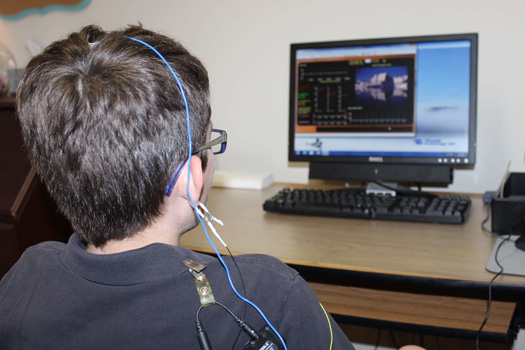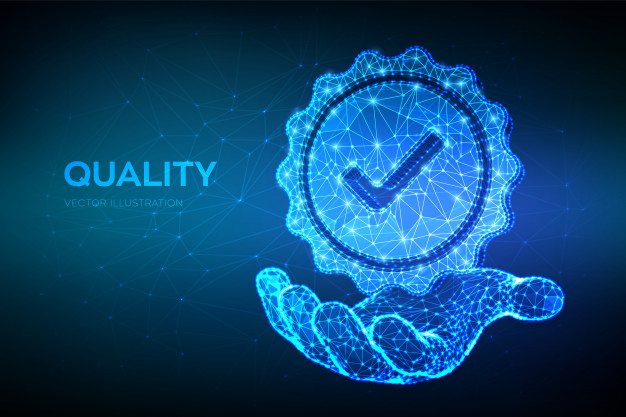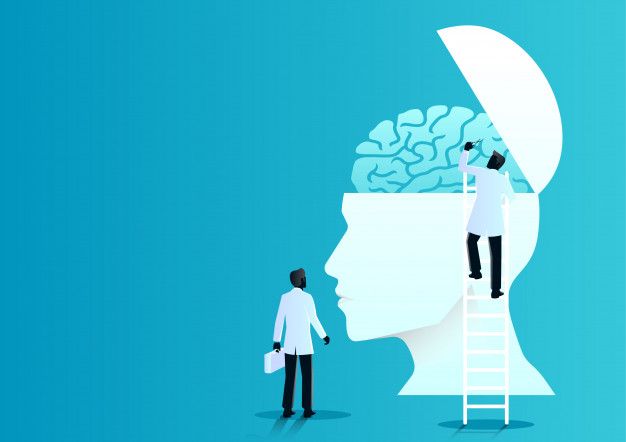Neurofeedback
Neurofeedback refers to a method in which neural information is fed back to the central nervous system (CNS) of people and attempts are made to teach them how to improve their brain function. The logic of this therapeutic method is based on operant conditioning. Normally, we are not able to control and change our brain waves; Because we do not know about these waves. In the neurofeedback treatment method, this awareness is tried to be created by providing very fast feedbacks (a few thousandths of a second after the occurrence) to the person. As this practice continues, the brain learns how to produce more waves that lead to better performance. Which waves in the brain increase and which waves decrease, completely depends on the problem of each person and the therapist adjusts it during the neurofeedback session.
Neurofeedback can be used to improve disorders such as ADHD, epilepsy, migraine, anxiety disorders, substance abuse, depression, stress management, sleep disorders, learning disabilities, etc.

Neurofeedback is actually a type of biofeedback that describes brain activity and teaches self-regulation by using “EEG” Electroencephalography or “HEG” Hemoencephalography brain waves. Neurofeedback EEG measures brain waves using sensors that are placed on the head, and according to a predetermined goal, the amplitude of brain waves, the degree of cooscillation, or the phase difference are changed; While HEG neurofeedback uses infrared light sensors to measure brain blood flow and regulate it. This method is known as neurotherapy, neurobiofeedback, and brain training.
History of neurofeedback:
It all started in the 1960s. Dr. Barry Sterman, a researcher at UCLA University of California, was conducting research on the neurological activity related to sleep, during which he managed to discover 14 Hz waves in the EEG of the tested cats’ brains. These waves were associated with the reduction of muscle tension in cats, and were later named SMR. Dr. Sterman and his team continued their research to see if cats increase the production of SMR waves in their brains in exchange for rewards. The answer was positive and the result was satisfactory. After that, Dr. Sterman led research for NASA in which he assessed the toxicity of rocket fuel (people who were exposed to the fuel experienced vomiting, headaches, increased breathing and exhalation (ventilation), hallucinations, and seizures).
Dr. Sterman exposed cats to large amounts of fuel and observed vomiting, noise, increased ventilation, salivation, convulsive attacks and death. But one group of cats showed another reaction that surprised the research team. They were able to stop seizures at a dose higher than what was tolerated by other cats. By referring to the records of the cats, the group found that this group of cats had already undergone SMR training during the sleep study. Dr. Sterman continued his research on humans and on patients with epilepsy. He has written many articles about the use of neurofeedback.
So far, no complications or negative effects from neurofeedback have been reported. The only thing that can be pointed out is that neurofeedback cannot change the symptoms of the disease. Also, the simultaneous use of drugs with neurofeedback does not have bad side effects, and according to the duration of neurofeedback treatment, the amount of the drug can be gradually reduced according to the doctor’s opinion.
Types of neurofeedback methods:
In recent years, different types of neurofeedback have been introduced, which can be categorized into the following 6 types:
1- EEG Neurofeedback: It is the most common type of neurofeedback, and surface waves are recorded and analyzed and specific feedback is provided based on their range.
2- Slow Cortical Potential Neurofeedback: analysis and feedback work is done on very low frequencies (below one hertz). It can be used to treat attention deficit/hyperactivity disorder and especially epilepsy.
3- HEG Neurofeedback: feedback is provided based on blood flow around the brain. This method has been very effective for the treatment of migraine, attention deficit disorder (ADD) and depression and can provide a more effective treatment. It also reduces the number of meetings by “half”.
4- Z-Score Neurofeedback: It is based on the first method of neurofeedback, but providing feedback is based on the database of normal society, which prevents excessive increase or decrease of brain wave activity after neurofeedback sessions.
5- LORETA Neurofeedback: Loretta neurofeedback, also known as deep neurofeedback, provides feedback based on the origin of brain waves.
6- fMRI Neurofeedback: the level of activity of each part of the brain is examined using an MRI device and feedback is provided. This method is still under research.
To learn about the points that should be considered when buying a neurofeedback device, read the following link:
Buying a neurofeedback device
applications:
In 2016, the AAPB Society for Applied Psychophysiology and Biofeedback and the ISNR Neuroregulatory Society published the third edition of the Guide to Assessing the Clinical Effectiveness of Psychophysiological Interventions. This guide was approved by the board of directors of both organizations. This criterion for determining the level of effectiveness (below) has been used for many biofeedback applications.
Level 1: Not empirically confirmed.
It has only been presented as informal reports and/or case studies in non-scientific forums. It is not experimentally confirmed.
Level 2: Less likely to be effective.
It has at least one study with adequate statistical power and valid and correct measurements, but lacks a randomized control group.
Level 3: Most likely effective.
It has several observational studies, clinical studies, waiting list studies, within-subject and between-subject studies that confirm efficacy.
Level 4: Effective.
Includes all of the following:
A. When compared with a no-treatment control group, another approved treatment, or a placebo group (using randomization), the treatment under investigation was shown to be statistically significantly superior to the control condition or to an effective treatment that was statistically powered. Appropriate is able to recognize distinctions equals.
b. Studies have been conducted on people with special problems whose conditions are defined in an operational and stable manner.
J. The study used clear and specific methods to measure results.
d. An appropriate analytical method has been used.
e. Diagnostic and treatment methods and variables are clearly stated, which allows independent researchers to repeat the study.
And. Superiority or equivalence of the treatment under investigation has been shown in at least two independent studies.
Level 5: Effective and specific
Evidence at level 5 has all of the items at level 4 and, in addition, it has been shown that the treatment under investigation is statistically superior to placebo treatment, drug treatment, or any other valid treatment in at least two independent studies, and it can somehow be The first line of treatment for the disorder was introduced.
disorder/problem |
Level of effectiveness |
| Attention deficit/hyperactivity disorder | 5 |
| depression | 4 |
| anxiety | 4 |
| Drug/alcohol abuse | 3 |
| epilepsy | 4 |
| chronic pain | 4 |
| sleep disorder | 3 |
| Temporomandibular joint disorders | 4 |
| arthritis | 3 |
| Respiratory problems | 2 |
| Brain injuries | 3 |
| autism | 3 |
| Learning disabilities | – |
| Improve cognitive functions | 3 |
What should you pay attention to when visiting the neurofeedback center?
Neurofeedback Center
If you want more information from this guide, introduction of approved neurofeedback centers in your city and region, or purchase a neurofeedback device, call 02188503633 extension 6.





